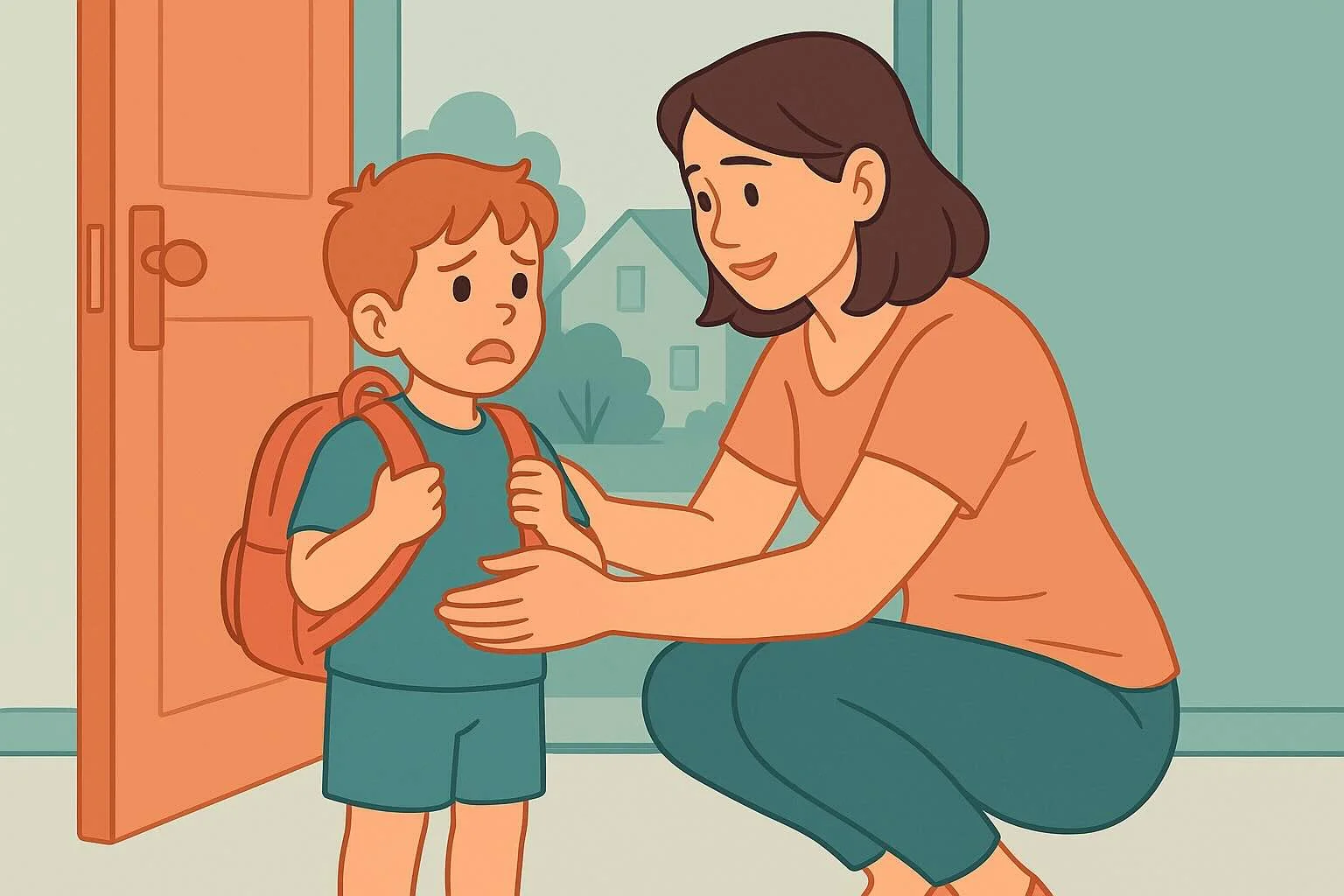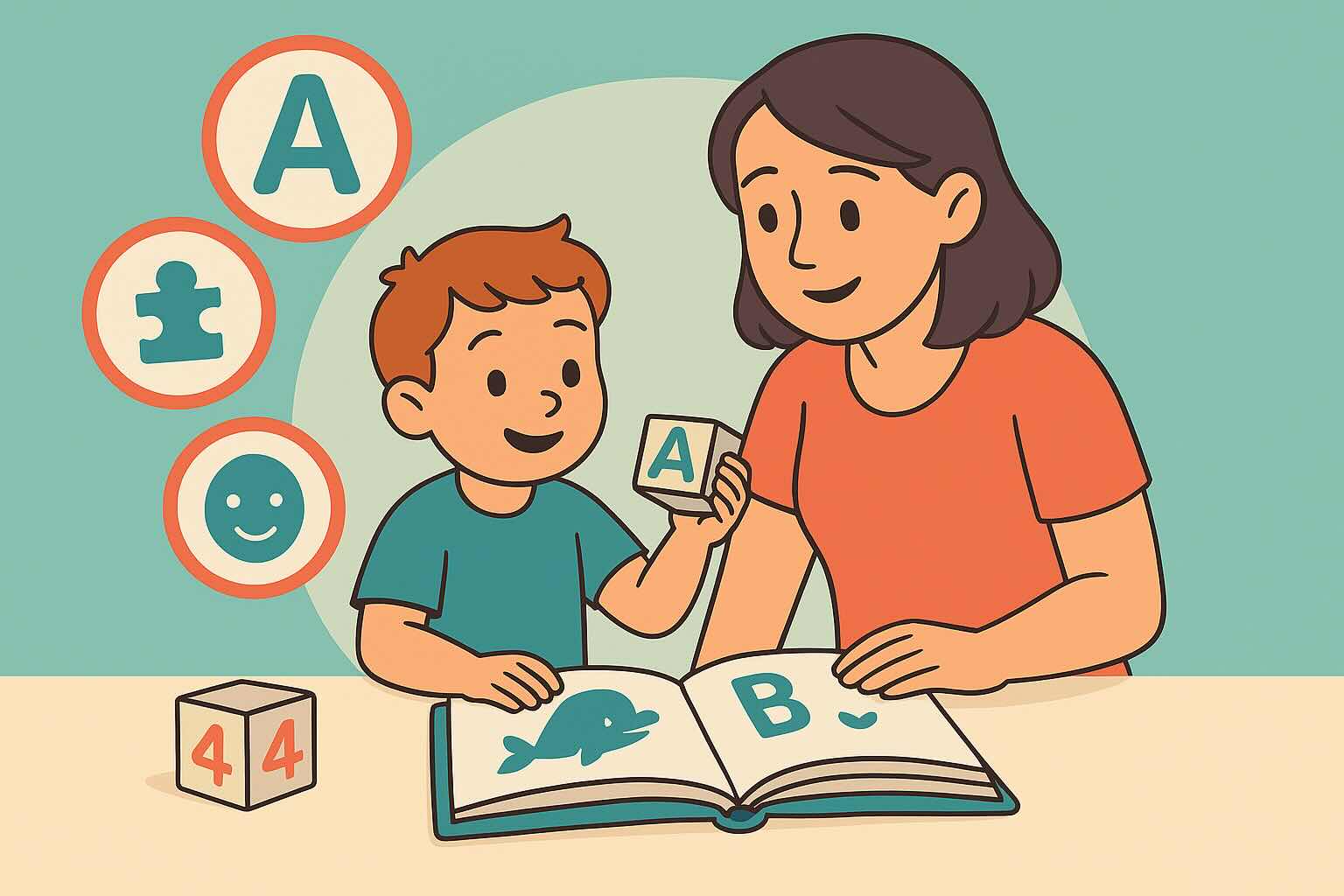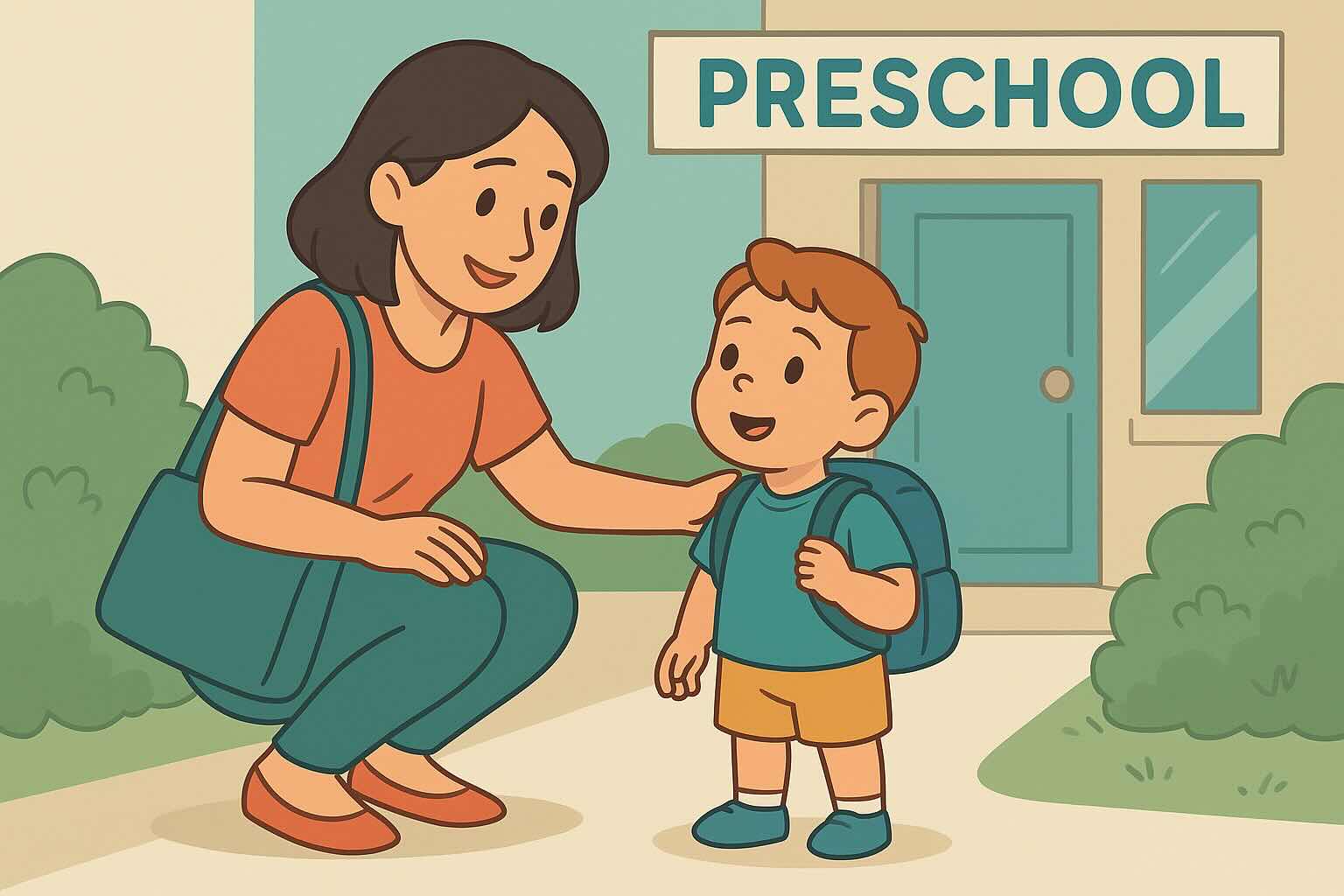Moving with Young Children: 8 Steps to Success


Moving homes ranks among the top stressors for families, and for children ages 3-7, it can feel like their entire world is changing. Research shows that 60% of families report significant behavioral changes in children during moves, but with proper preparation and emotional support, most children adapt successfully within 3-6 months.
This comprehensive guide provides evidence-based strategies from family psychology research and moving specialists. You'll learn how to transform this major life transition from a source of family stress into an opportunity for growth and adventure.
For related challenges, also check out our starting school guide, routine changes strategies, new sibling preparation, and family visit planning for other major transitions.
What You'll Learn in This Guide
- The Psychology of Moving Stress - Why moving feels overwhelming for young children and families
- Age-Specific Preparation Strategies - Different approaches for 3-year-olds vs. 7-year-olds
- The 8-Week Moving Timeline - Step-by-step preparation to reduce stress and anxiety
- Emotional Support Techniques - Scripts and strategies for handling fears, resistance, and grief
- Making the New House Feel Like Home - Practical ways to help children settle in quickly
- When Moving Gets Complicated - Strategies for divorce moves, long-distance relocations, and multiple transitions
- Real Family Moving Success Stories - How other families navigated challenging relocations
Estimated reading time: 11 minutes
Why Moving Feels So Big: The Psychology of Childhood Relocation
Your Child's Attachment to Place and Routine
For young children, home represents much more than just a building—it's their base of security, familiarity, and identity. Children form deep emotional attachments to:
- Physical spaces: Their bedroom, favorite hiding spots, the stairs they run up and down
- Sensory memories: How their house smells, sounds at night, the way light comes through windows
- Neighborhood familiarity: The route to the park, their friend's house, the local grocery store
- Routine predictability: Where things belong, daily patterns, and environmental cues
When these familiar anchors disappear simultaneously, it can trigger a stress response similar to grief, because in many ways, children are mourning the loss of their known world.
The Neuroscience of Change in Developing Brains
Children's brains are wired to seek predictability and safety. Moving disrupts multiple neural pathways that have been established for comfort and security:
Normal stress responses to moving include:
- Sleep disruption and bedtime resistance
- Regression in independence skills (toileting, dressing, eating)
- Increased emotional sensitivity and meltdowns
- Clinginess and separation anxiety
- Physical complaints (stomachaches, headaches) without medical cause
- Changes in appetite or eating behaviors
These responses are protective mechanisms, not signs of weakness or poor adjustment. They typically resolve within 6-12 weeks as children establish new patterns of safety and familiarity.
Individual Differences in Moving Adaptation
Naturally adaptable children may adjust within 2-4 weeks and show curiosity about exploring new spaces.
Sensitive or cautious children may need 3-6 months and require more preparation and emotional support.
Children with strong attachments to routine might struggle more with the disruption but benefit from maintaining familiar patterns.
Consider your child's temperament, age, and previous transition experiences when setting realistic expectations and choosing support strategies.
Age-Specific Moving Preparation Strategies
Ages 3-4: Concrete Thinking and Security Needs
Developmental considerations:
- Limited understanding of time and distance concepts
- High need for physical comfort and familiar objects
- Difficulty distinguishing between temporary and permanent changes
- Strong attachment to routine and environmental predictability
Effective preparation strategies:
- Use simple, concrete language: "We're going to live in a different house"
- Focus on what stays the same: "Your toys and bed are coming with us"
- Show photos of the new house and neighborhood repeatedly
- Pack their room last and unpack it first in the new home
- Maintain consistent meal times, bedtime routines, and comfort objects
Common challenges:
- Difficulty understanding why the move is necessary
- Fear that they or family members will be left behind
- Confusion about timeline and what "moving day" means
- Regression in toilet training or sleep patterns
Ages 4-5: Expanding Awareness and Social Connections
Developmental readiness:
- Better understanding of cause and effect
- Growing awareness of friendships and social connections
- Increased curiosity about new experiences
- Developing sense of personal preferences and opinions
Preparation focuses:
- Explain simple reasons for moving in age-appropriate terms
- Address concerns about making new friends and keeping old ones
- Involve them in age-appropriate moving decisions (room color, toy organization)
- Practice talking about their new address and neighborhood
- Plan special goodbye activities with current friends
Common concerns:
- Worry about losing current friendships
- Questions about whether their new home will be "better" or "worse"
- Anxiety about starting at new schools or daycares
- Desire to have some control over moving decisions
Ages 5-7: Logical Thinking and Independence
Advanced preparation needs:
- Understanding of geography and distance concepts
- Awareness of family circumstances that necessitate moves
- Ability to participate in planning and problem-solving
- Concerns about academic and social continuity
Preparation strategies:
- Provide clear, honest explanations for moving reasons
- Show maps and discuss travel time to visit old friends
- Research new schools, activities, and community resources together
- Allow meaningful input on room setup and family activity choices
- Help them create connection plans with current friends
Unique challenges:
- Understanding family financial or job-related stress
- Worry about academic performance in new schools
- Concerns about fitting in with new peer groups
- Balancing excitement about new opportunities with sadness about leaving
The 8-Week Moving Preparation Timeline
8 Weeks Before: Initial Conversations and Information Gathering
Begin positive, factual discussions:
- "Our family is going to move to a new house in [location] because [simple reason]."
- "Moving means packing up our things and taking them to live in a different house."
- "You'll still have all your special toys and books—they're coming with us."
Start gathering information:
- Research child-friendly activities and spaces in the new area
- Find photos of the new house, neighborhood, and nearby amenities
- Connect with new schools, daycares, or activity programs
- Begin discussing timeline in child-friendly terms
6 Weeks Before: Emotional Processing and Connection Building
Address feelings and concerns:
- "Moving can feel exciting AND scary at the same time—both feelings are okay."
- "It's normal to feel sad about leaving our house and happy about our new adventure."
- "You might have questions or worries, and you can always talk to me about them."
Begin building connections to new area:
- Show photos and videos of the new house and neighborhood regularly
- Read books about moving and discuss characters' feelings
- If possible, plan a visit to the new area to explore together
- Start researching activities and attractions your child might enjoy
4 Weeks Before: Practical Preparation and Involvement
Include your child appropriately:
- Let them choose which items to pack first (non-essentials)
- Discuss room setup and where their belongings will go
- Create "moving day" visual schedule showing what will happen
- Begin saying goodbye to special places with photo-taking adventures
Increase practical discussions:
- "In four weeks, we'll live in our new house. That's after [familiar event]."
- "The moving truck will take our furniture to the new house."
- "Your bed and toys will be in your new room, just arranged differently."
2 Weeks Before: Intensive Preparation and Support
Focus on emotional readiness:
- Validate any increased anxiety or behavioral changes
- Practice deep breathing or calming strategies for stressful moments
- Create special goodbye rituals for friends, pets, or favorite places
- Assemble "first day in new house" comfort kit
Finalize logistics:
- Pack child's room mostly, leaving essentials for last days
- Prepare special snacks and activities for moving day
- Arrange temporary sleeping arrangements and comfort items
- Create simple visual schedule for moving day activities
Supporting Children Through Moving Emotions
The 5-Step Moving Support Method
Step 1: Validate the Full Range of Feelings Moving brings up complex, often contradictory emotions. Children need permission to feel sad, excited, worried, and curious all at once.
Validation scripts:
- "It makes sense to feel sad about leaving our house AND excited about the new one."
- "Missing your old room AND being curious about your new room can both be true."
- "Moving is one of the biggest changes people experience—of course you have big feelings."
Step 2: Focus on What Stays the Same When everything feels different, emphasizing continuity provides crucial emotional stability.
"Same and Different" conversations:
- "Our address will be different, AND our family will still be together."
- "Your bedroom will look different, AND you'll still have all your special stuffed animals."
- "We'll shop at a different grocery store, AND we'll still have family movie nights."
Step 3: Give Age-Appropriate Control Feeling powerless increases anxiety. Offering choices within the moving process helps children feel empowered rather than victimized by change.
Appropriate choices for children:
- Which items to pack first vs. keep accessible until moving day
- How to arrange furniture in their new room
- Which comfort items to keep in their "first day" survival kit
- Special activities for saying goodbye to current home
Step 4: Create Connection Bridges Help children maintain emotional connections to their previous life while building excitement about their new one.
Bridge-building activities:
- Create photo albums or memory books about current home and friends
- Plan specific times to video call old friends
- Find similarities between old and new neighborhoods
- Establish one special tradition that will continue in the new house
Step 5: Allow Time for Adjustment Moving grief is real and follows predictable patterns. Rushing children through sadness often prolongs the adjustment process.
Realistic adjustment expectations:
- First 2 weeks: Focus on basic needs, unpacking essentials, exploring immediate area
- Weeks 3-6: Begin establishing routines, making initial social connections
- Months 2-3: Develop familiarity with new community, settle into activities
- Months 4-6: Feel "at home" in new environment, establish meaningful friendships
Making the New House Feel Like Home
The "First Day" Survival Strategy
Priority unpacking order:
- Child's bedroom: Set up bed, familiar bedding, and favorite toys first
- Family photos: Display pictures throughout the house immediately
- Kitchen basics: Familiar dishes, cups, and snack foods
- Bathroom: Familiar toiletries, towels, and comfort items
- Common areas: One cozy space for family gathering
Create immediate familiarity:
- Play familiar music during unpacking
- Order pizza or familiar takeout for the first dinner
- Maintain regular bedtime routine even if surroundings are chaotic
- Set up one comfortable reading or play space right away
Building New Positive Associations
Exploration activities:
- Take daily walks around the neighborhood to build familiarity
- Find "special spots": new favorite tree, interesting mailbox, friendly neighbor
- Establish one new tradition unique to this house (reading spot, dance area)
- Document new discoveries with photos or drawings
Community connections:
- Visit library, parks, and playgrounds within first two weeks
- Introduce yourselves to neighbors with children
- Explore local ice cream shop, toy store, or family-friendly restaurant
- Attend community events or story times to meet other families
When Resistance Continues
If your child consistently expresses dislike for the new house:
- Acknowledge their feelings without trying to convince them otherwise
- Focus on finding one small thing they appreciate each day
- Create comparison charts: things they miss vs. new discoveries
- Give permission to grieve their old home while gradually building new attachments
- Consider professional support if resistance affects daily functioning after 2-3 months
Handling Complicated Moving Situations
Divorce-Related Moves
Additional considerations:
- Children may blame themselves for family changes
- Moving may feel like punishment or abandonment
- Maintaining connection to non-custodial parent becomes complex
- Emotions about family separation mix with moving stress
Special support strategies:
- Clearly separate moving stress from divorce-related feelings
- Maintain consistent contact schedules with other parent when possible
- Validate that having two big changes simultaneously is extra difficult
- Consider family counseling to support emotional processing
Long-Distance Moves
Unique challenges:
- Greater distance from familiar people and places
- More significant lifestyle and cultural changes
- Difficulty maintaining friendships across time zones
- Potential language or regional differences
Long-distance preparation:
- Research cultural differences and discuss them openly
- Plan concrete strategies for maintaining important friendships
- Connect with families from your region who live in the new area
- Allow extra time for adjustment (6-12 months rather than 3-6 months)
Multiple Simultaneous Transitions
When moving coincides with:
- New job starting for parents
- Beginning new school mid-year
- New baby arrival
- Family structure changes
Stress management strategies:
- Prioritize which changes you can control timing for
- Maintain as many familiar routines as possible during transition period
- Focus on one adjustment at a time rather than trying to perfect everything
- Consider professional family support if stress becomes overwhelming
When to Seek Professional Support
Red Flags After 2-3 Months
Persistent adjustment difficulties:
- Sleep problems that don't improve with consistent routines
- Regression in multiple developmental areas (toileting, independence, social skills)
- Persistent sadness or withdrawal from family activities
- Aggressive behavior or extreme emotional outbursts that are new or escalating
- Physical symptoms without medical cause (frequent stomachaches, headaches)
- Refusal to leave the house or participate in community activities
Academic or social concerns:
- Significant difficulty making friends or connecting with peers
- Academic performance decline that doesn't improve with support
- Social withdrawal or anxiety in new school environment
- Persistent statements about wanting to "go home" to previous location
Types of Support Available
Professional resources:
- Family therapists specializing in transition stress
- Child psychologists for anxiety and adjustment disorders
- School counselors for academic and social support
- Support groups for families experiencing major transitions
Community support:
- Parent groups for newcomers to the area
- Family activity groups and community centers
- Religious or cultural organizations that welcome new families
- Online communities for families who have relocated
Real-Life Moving Success Stories
The Jackson Family: Cross-Country Move with Two Young Children
"We moved from Oregon to North Carolina when our kids were 4 and 6. I was terrified about how they'd handle being so far from grandparents and friends. We spent 8 weeks preparing: showing them photos, reading books about North Carolina, and planning our driving route with fun stops. The first month was really hard—lots of tears and 'I want to go home.' But we focused on exploring one new place each week and video calling Oregon family twice a week. By month 3, they had made friends and started calling our new house 'home.' The key was validating their sadness while staying positive about new adventures."
The Chen Family: Divorce Move and School Change
"After my divorce, I had to move with my 5-year-old daughter to a smaller apartment across town, which meant changing schools mid-year. Emma was dealing with her parents' separation AND losing her familiar environment. I was honest that moving was hard for all of us, but we focused on what stayed the same: our bedtime stories, Saturday morning pancakes, and her stuffed animal collection. Her new teacher was incredibly supportive, and I connected with other single parents in the building. It took about 6 months, but she's now thriving in her new school and has friends in our apartment complex."
The Rodriguez Family: Military Move with Multiple Transitions
"Military families move frequently, but this relocation to Germany felt especially challenging with our 3 and 7-year-old. We treated it as a big adventure while acknowledging it was also hard. We researched German culture together, learned basic phrases, and connected with other military families before arriving. The base had great support resources, and we established our family traditions quickly in base housing. Both kids adapted faster than expected—I think because we'd moved before and they trusted that we'd figure it out together. Having a support community of other military families who understood was crucial."
Your 6-Week Moving Success Action Plan
Week 1: Assessment and Foundation
- Honestly assess your family's stress level and support needs
- Begin regular conversations about the move using positive, factual language
- Start gathering information about new community resources and activities
- Address any immediate concerns or questions your child has
Week 2: Emotional Preparation and Processing
- Focus on validating your child's feelings about the upcoming change
- Create "same and different" lists to emphasize continuity alongside change
- Begin saying goodbye activities: photo albums, memory making with friends
- Start involving your child in age-appropriate moving decisions
Week 3: Practical Preparation and Skill Building
- Begin packing non-essential items with your child's help
- Practice new address and phone number if age-appropriate
- Research and discuss new schools, activities, and community resources
- Increase discussions about moving day logistics and timeline
Week 4: Intensive Preparation and Support
- Pack your child's room partially, leaving comfort items for last
- Create moving day survival kit with special snacks, activities, and comfort items
- Plan final goodbye activities with friends and favorite places
- Prepare for potential increase in emotional sensitivity or behavioral changes
Weeks 5-6: Moving and Initial Adjustment
- Focus on basic needs: sleeping, eating, and immediate safety in new environment
- Set up child's room and familiar spaces first
- Explore immediate neighborhood together daily
- Maintain familiar routines as much as possible during initial transition
Ongoing: Building New Home and Community
- Continue exploring new community resources and making connections
- Allow 3-6 months for full emotional adjustment to new environment
- Celebrate small victories and acknowledge progress in adaptation
- Stay connected to previous friendships while building new relationships
Key Takeaways: Your Moving Success Guide
- ✅ Moving stress is normal and affects 60% of families during major relocations
- ✅ Children need 3-6 months for full adjustment to new homes and communities
- ✅ Emotional validation is more helpful than forced positivity during transition periods
- ✅ Maintaining familiar routines provides stability during environmental changes
- ✅ Age-appropriate involvement empowers children rather than making them feel powerless
- ✅ Focusing on continuity reduces anxiety about change and loss
- ✅ Professional support is available if adjustment difficulties persist beyond 3 months
- ✅ Building new community connections takes time but is essential for long-term happiness
- ✅ Moving can strengthen family bonds when approached with patience and preparation
Remember: Every family's moving experience is unique. Trust your family's resilience while providing the emotional support and practical preparation needed for successful transition.
This article is based on family psychology research and transition studies. Individual experiences vary significantly based on family circumstances, child temperament, and community resources. Always consult with mental health professionals if moving stress significantly impacts your family's daily functioning or wellbeing.
24/7 AI Parenting Assistant
Get instant, personalized advice with expert-curated parenting knowledge. Chat with your AI coach anytime, anywhere.

Routine Transition Planner
4-week method for implementing routine changes successfully with gradual strategies and resistance management techniques.
Frequently Asked Questions
Need personalized support?
RootWise's AI coach can provide tailored strategies for your specific situation, available 24/7 when you need it most.
Learn More About AI Coaching →



